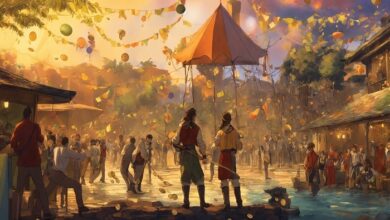Smartphone Insiders: 144Hz Low-End Gadgets

In the world of smartphones, it’s not just about the high-end, top-of-the-line devices that come with hefty price tags. For many users, the mid-range and low-end smartphones are more practical and affordable. However, just because these smartphones are priced lower doesn’t mean they compromise on features and specifications. In fact, some of the latest low-end smartphones come with a 144Hz refresh rate display, which is usually found in high-end devices. In this article, we’ll take a closer look at these devices and discuss how they provide a great user experience without breaking the bank.
What Is A 144Hz Refresh Rate?
Before we dive into the world of 144Hz low-end smartphones, let’s first understand what a 144Hz refresh rate is. A refresh rate refers to how many times per second a screen refreshes the image being displayed. The higher the refresh rate, the smoother the visuals will look, especially when it comes to fast-paced content like video games or sports. Most smartphones come with a standard refresh rate of 60Hz, which is enough for everyday use. However, if you’re a gamer or someone who watches a lot of high-speed content, a higher refresh rate can make a big difference in your viewing experience.
Top 144Hz Low-End Smartphones
Now that we understand what a 144Hz refresh rate is, let’s take a look at some of the top low-end smartphones that come with this feature.
1. POCO X3 Pro
The POCO X3 Pro is a mid-range smartphone that offers a 6.67-inch 1080p LCD display with a 120Hz refresh rate. However, if you’re willing to shell out a little extra cash, you can upgrade to the POCO X3 GT, which comes with a 6.6-inch 1080p LCD display with a 120Hz refresh rate.
2. Realme Narzo 30 Pro
The Realme Narzo 30 Pro is another mid-range smartphone that comes with a 6.5-inch 1080p LCD display with a 120Hz refresh rate. While this phone doesn’t have a 144Hz refresh rate, its 120Hz refresh rate is still a significant improvement over the standard 60Hz refresh rate found in most smartphones.
3. Redmi Note 10S
The Redmi Note 10S is a budget smartphone that offers a 6.43-inch 1080p AMOLED display with a 60Hz refresh rate. However, if you’re looking for a higher refresh rate, you can opt for the Redmi Note 10 Pro, which comes with a 6.67-inch 1080p AMOLED display with a 120Hz refresh rate.
Advantages of 144Hz Low-End Smartphones
Now that we’ve discussed some of the top 144Hz low-end smartphones, let’s talk about the advantages of these devices.
1. Smooth Visuals
The biggest advantage of a 144Hz refresh rate is that it provides smoother visuals, especially when it comes to fast-paced content like video games or sports. This means you’ll experience less lag and motion blur, which can make a big difference in your viewing experience.
2. More Responsive Touchscreen
A higher refresh rate also means a more responsive touchscreen. This is especially important for gamers, as it can improve their gameplay and reaction times.
3. Affordable Price
The biggest advantage of 144Hz low-end smartphones is their affordable price tag. These devices offer high-end features at a much lower price than their flagship counterparts, making them more accessible to a wider range of users.
4. Longer Battery Life
While a higher refresh rate does require more power from the device, many 144Hz low-end smartphones come with efficient processors and optimized software that can help conserve battery life. Additionally, some devices come with adaptive refresh rate technology, which can adjust the refresh rate based on the content being displayed, further improving battery life.
Conclusion
In conclusion, 144Hz low-end smartphones offer a great user experience at an affordable price point. While they may not have all the bells and whistles of high-end devices, they do come with a feature that was previously only available in flagship phones. Whether you’re a gamer or just someone who wants a smoother viewing experience, a 144Hz low-end smartphone is definitely worth considering.
FAQs
- What is the difference between a 60Hz and a 144Hz refresh rate?
- A 144Hz refresh rate provides smoother visuals, especially when it comes to fast-paced content like video games or sports.
- Are 144Hz low-end smartphones good for gaming?
- Yes, 144Hz low-end smartphones can provide a great gaming experience with improved visuals and a more responsive touchscreen.
- Will a higher refresh rate drain the battery faster?
- Yes, a higher refresh rate does require more power from the device, but many 144Hz low-end smartphones come with efficient processors and optimized software that can help conserve battery life.
- Do all low-end smartphones come with a 144Hz refresh rate?
- No, not all low-end smartphones come with a 144Hz refresh rate, but there are several options available in the market.
- Can a higher refresh rate affect the device’s performance?
- A higher refresh rate can put more strain on the device’s processor and graphics capabilities, but most 144Hz low-end smartphones come with hardware and software optimizations to ensure smooth performance.




